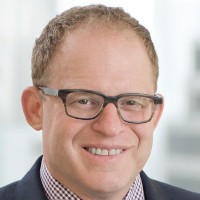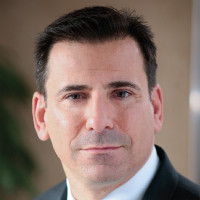Foundations and other nonprofits tend to view legal compliance as the final step in building an impactful program, and they often wait until the last minute to bring in legal counsel for a green (or red) light. Too often, this positions legal counsel and program staff as adversaries, rather than partners in creative and impactful program design. But it doesn’t have to be that way. To better understand how lawyers can be impactfocused partners and help foundations and their program officers plan for and manage risk, Maya Winkelstein from Open Road Alliance sat down with two seasoned lawyers, Tomer Inbar, a partner at Patterson Belknap Webb & Tyler LLP, and James P. Joseph, a partner at Arnold & Porter Kaye Scholer.
Navigating Risk in Impact-Focused Philanthropy

This special supplement examines the concept of risk in philanthropy, providing insights, examples, and practical steps to help philanthropists better account for and manage risk as an integral part of the grantmaking process.
Maya Finkelstein: In your experience, what are the practical ways that a lawyer can help a foundation keep the impact of its programmatic work on track?
Tomer Inbar: At a basic level, a lawyer can keep impact on track by having insight into the mission, personality, and operations of an organization. This allows a lawyer to be a creative problem solver and better understand how to communicate about issues a client may face early in the program development cycle so that compliance isn’t an obstacle to impact at the end. We view legal compliance as freeing, enabling people to go where they want programmatically without creating risks or issues. And as lawyers, we try to get our clients to understand legal compliance in the same way. Legal compliance should be viewed as a component of achieving impact, and the earlier on a lawyer is brought in, the more helpful we can be in ensuring program development.
James P. Joseph: It’s also important for us to remember that as lawyers, giving advice that is practical and useful is important. We don’t want to set up a legal system for a client that is so complex that it impedes people from doing their job. Yes, there are legal rules that have to be followed, but a critical part of our job is to help an organization understand what legal risk the organization can take, or needs to take, to achieve its mission.
Tomer Inbar"> "Legal compliance should be viewed as a component of achieving impact, and the earlier on a lawyer is brought in, the more helpful we can be in ensuring program development.—Tomer Inbar
"Legal compliance should be viewed as a component of achieving impact, and the earlier on a lawyer is brought in, the more helpful we can be in ensuring program development.—Tomer Inbar
Inbar: Absolutely. Having an onerous legal and internal compliance system that is ignored is far worse than having a more targeted system that is actually put into practice. Lawyers need to work with an organization to understand and make clear the risks that absolutely need to be focused on, and then build a practical program from there.
Why should lawyers care about impact if their fundamental job is to protect the foundation?
Joseph: It is a false premise to say that a lawyer’s fundamental job is to protect the foundation. A lawyer’s job is also to protect the mission of that organization, and one part of that is not putting them at legal risk. And at the same time, it may be the case that if you are 100 percent protected from risk, you may not be very effective programmatically. You may not have the impact that you want while maintaining a conservative risk profile. There is inherently going to be some level of risk in anything that a charity does.
Inbar: Even by using the word “protect,” it sounds like we are protecting the foundation from itself or stepping in between it and a problem to ensure compliance—as though we are separate from the organization. I don’t think of myself so much as protector, but rather as someone working with an organization to help it achieve its mission.
What do you do when the culture of a foundation you are working with has taken on a risk profile that doesn’t reflect legal reality?
James P. Joseph"> "It is a false premise to say that a lawyer's fundamental job is to protect the foundation. It's also to protect the mission of that organization, and one part of that is not putting them at legal risk."—James P. Joseph
"It is a false premise to say that a lawyer's fundamental job is to protect the foundation. It's also to protect the mission of that organization, and one part of that is not putting them at legal risk."—James P. Joseph
Joseph: I’ve realized how infrequent it is that people discuss a risk profile in a straightforward way. So, in working with clients, I’ve started being more direct and asking, what is your risk profile? Are you comfortable taking a risk, or do you want to take as little risk as possible? If there are any gray areas around compliance, where do you want to fall? For example, if a foundation is funding a project that includes advocacy, that may or may not constitute lobbying. There are many activities that do not clearly fit outside of the definition of lobbying, but they also do not fall clearly within the definition. Some clients won’t go near a project like that, but others want a defensible position. They don’t want to play cute with the rules, but they are willing to go closer to the line. It’s important for a client to know their risk threshold, because there is a relationship between risk and impact—if we go up the scale on risk mitigation and ensure the highest level of legal compliance, the potential for impact may go down. That’s why having conversations about risk and compliance on the front end of programmatic development can help shape impact.
Inbar: There can be times when an organization’s risk tolerance is unnecessarily conservative. And that may just be the organization’s personality. But I do think it’s incumbent on the lawyer to try to challenge an overly conservative risk profile. A lawyer can work with his or her clients or programmatic counterparts and lay out different ways to achieve impact that the organization may not have considered because they didn’t know how to navigate legal compliance or they are concerned with creating legal complexity. A lawyer can help achieve impact by moving the institutional culture. The law in and of itself can’t do that.
What are some of the challenges that lawyers might face when they attempt to contribute to a foundation’s programmatic impact?
Joseph: I find it most challenging when clients want to compartmentalize lawyers from programmatic impact because they see them as separate. In my view, that is not effective or efficient; you have to, from the beginning, combine program and compliance. When the lawyers aren’t brought in until the very end, you can run into compliance roadblocks, which often ends up being more expensive for the client.
Inbar: Too often, lawyers aren’t seen as partners in a foundation’s mission. When you make a differentiation between program and compliance, it’s a false distinction that doesn’t help anyone achieve their common objective. But when we are brought in as a part of programmatic development, we can help remove hurdles to impact from the beginning.
What advice would you give to lawyers about how to start the conversation about risk with their programmatic counterparts? And conversely, how can a program officer start the conversation about risk with their legal counsel?
Inbar: It is important that both parties understand where the other is coming from. A lawyer has to fully understand what a program team is hoping to accomplish, and the best way is to have face-to-face conversations. While meeting in person is more time and effort than exchanging emails back and forth, having real dialogue not only helps with mutual understanding, but increases trust. These conversations then allow a lawyer to be more flexible and creative. Lawyers who don’t have a full picture of an organization’s programs, or are less experienced, can often give very rigid advice in order to err on the side of caution, which can affect impact. But when you really consider what a program team is trying to accomplish, it allows for creative problem solving so that compliance and impact aren’t in tension.
Joseph: When lawyers understand a program team’s goals and what the planned steps are, they can anticipate obstacles and help an organization accomplish its goal. Counsel might just suggest a slightly different course to get them there—one that better manages legal risk.
What other advice do you have for foundations and their legal counsel as they think about, and attempt to better manage, risk?
Joseph: Formulating a very clear risk profile is incredibly helpful in guiding program development—it can be a much more practical framework for an organization to work within rather than vague legal concepts.
Inbar: I would emphasize that legal issues inform business issues. So, while lawyers are certainly there to work on the legal issues, not bringing them into the business practices of an organization is a mistake. As lawyers, it’s important that we have a full picture of what we’re giving advice on, since the advice we’re offering has to work in the real world.
Joseph: As lawyers, we can offer different business paths. We can identify paths that may have one or two legal issues versus ones that might have dozens. Bringing us in as part of the team while programs and plans are developing allows us to advise on the best course of action from the outset.
Support SSIR’s coverage of cross-sector solutions to global challenges.
Help us further the reach of innovative ideas. Donate today.
Read more stories by Maya Winkelstein.

